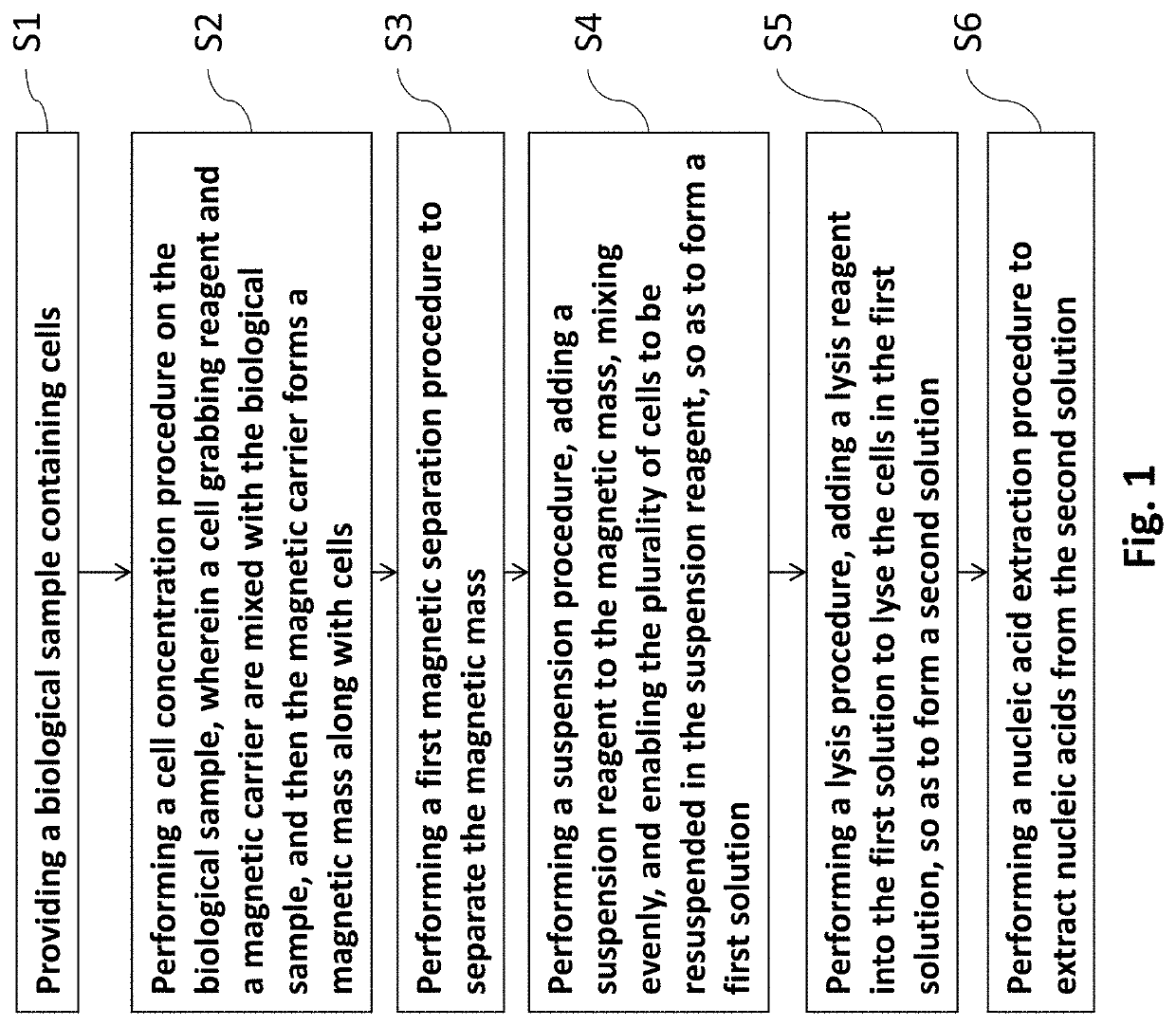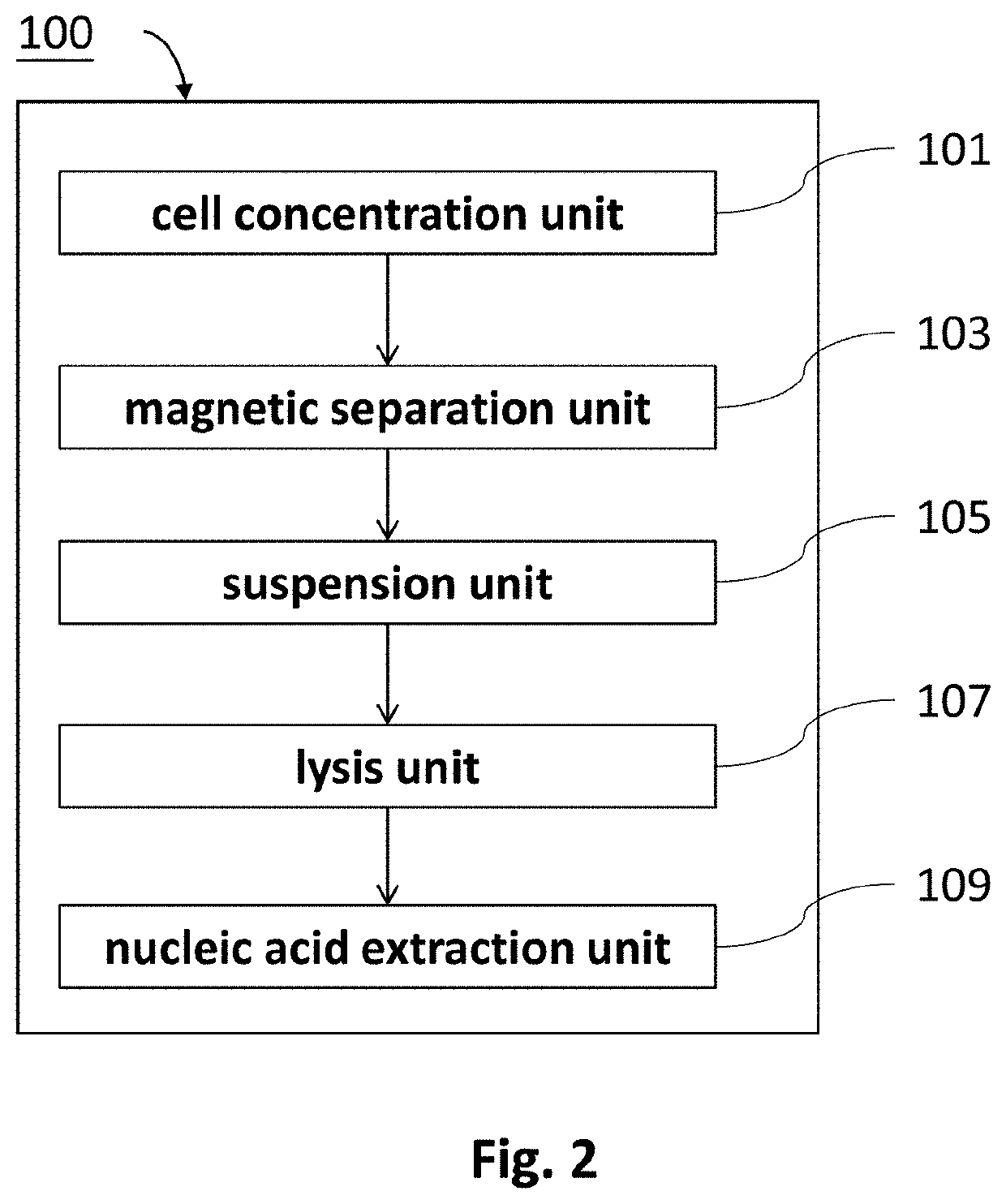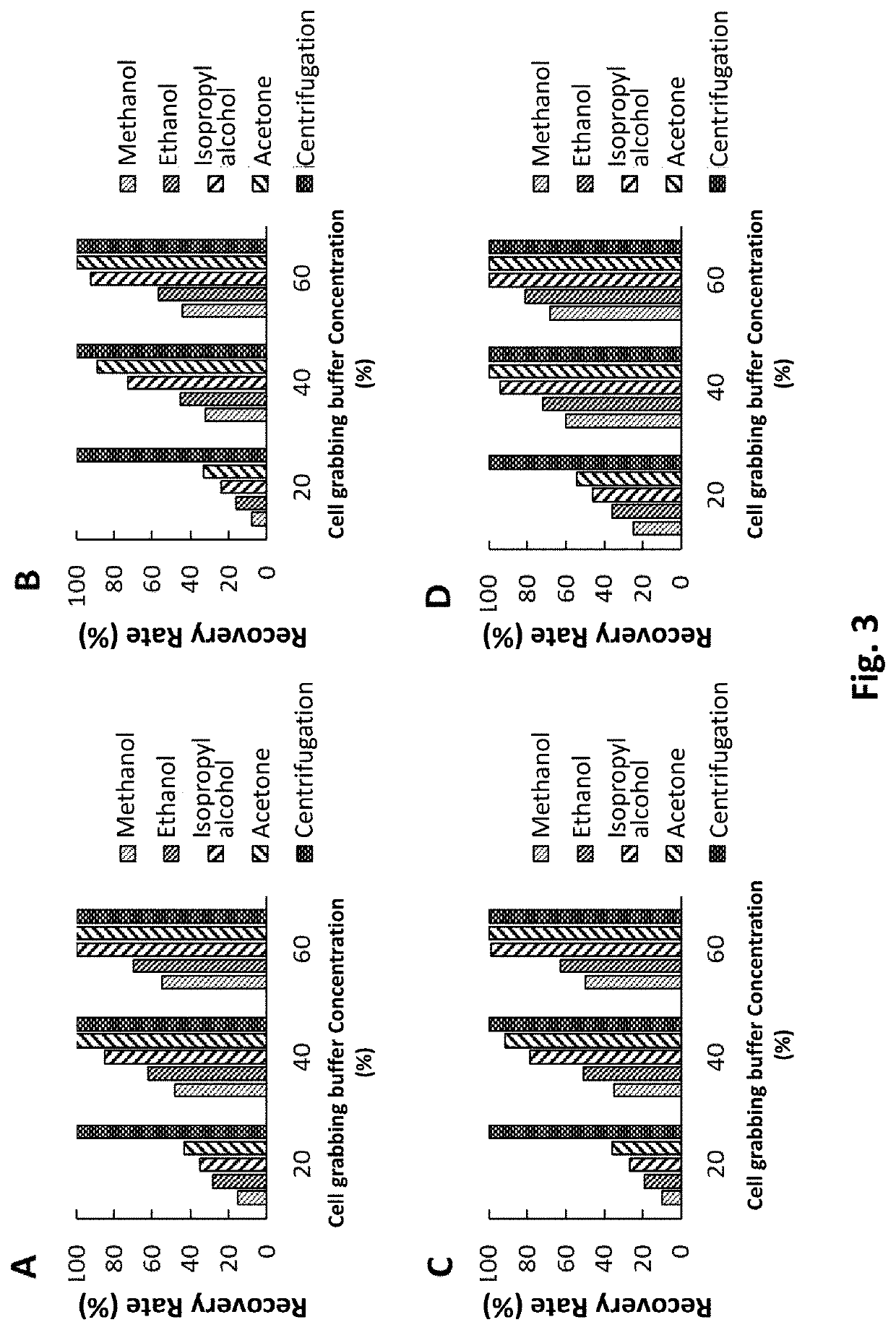Method of isolating nucleic acids and the system thereof
a nucleic acid and magnetic separation technology, applied in the field of methods and systems for nucleic acid magnetic separation, can solve the problems of deteriorating the quality and performance of nucleic acid isolation, limiting the pretreatment of biological samples, and not eliminating the disadvantages derived, so as to hinder the automated separation of nucleic acids, the operation conditions are relatively strict, and the practical use is substantially limited.
- Summary
- Abstract
- Description
- Claims
- Application Information
AI Technical Summary
Benefits of technology
Problems solved by technology
Method used
Image
Examples
example 1
bing Reagents are Used with Different Magnetic Carrier
[0054]E. coli (DH5a strain cloned with TA vector, referred to as DH5a / TA) is used as a biological sample. Different cell grabbing reagents are used for different types of magnetic beads to perform the cell concentration procedures. For instance, the present Example use methanol, ethanol, isopropyl alcohol, and acetone aqueous solution as cell grabbing reagents respectively, and the traditional centrifugal method for cell concentration is used as a control. The goal is to isolate the plasmid DNA from E. coli, and the recovery rate of the plasmid DNA is used as an evaluation index.
[0055]At the same time, the aforementioned controlled experimental design is also applied to different types of magnetic beads for cell concentration, to assess the overall efficacy of cell grabbing reagent with different magnetic vectors. The specific evaluation indexes are the quantification results (e.g., recovery rate) and the qualitative results (e.g...
example 2
bing Reagents are Used with Different Biological Samples (In Vitro Cultured Cells)
[0073]First, the cell concentration procedures of the control group and the experimental group are performed respectively:
[0074]A. Control group: obtain 500 μl in vitro cultured Hela cells (containing 25% trypsin and 75% cultured medium) and centrifuge (13000 rpm) for 3 minutes, reserve the cell pellet for subsequent nucleic acid isolation, then remove and discard the supernatant.
[0075]B. Experimental group: obtain 500 μl in vitro cultured Hela cells (containing 25% trypsin and 75% cultured medium), add 500 μl cell grabbing reagents (type and concentration are shown in Table 1) and 22.5 μl ImaBeads beads, invert and mix for 1 minute, perform the magnetic separation procedure, and then remove the supernatant to proceed the nucleic acid isolation.
[0076]Next, both groups are performed with the same genomic DNA magnetic separation procedure, as follows:
[0077]1. Add 200 μL PBS and 20 μL Proteinase K (10 mg / ...
example 3
bing Reagents are Used with Different Magnetic Carrier (Whole Blood)
[0091]The overall experimental objectives of Example 3 are similar to those of Example 2, the main difference is that Example 3 uses whole blood as a biological sample. Whole blood is extensively used as a biological sample in clinical settings. Additionally, this Example further uses three different types of beads for automated process (silicon dioxide beads, nitrocellulose beads, polyvinyl alcohol beads) for the same experimental process to verify the effect of implementing the present invention.
[0092]First, the cell concentration procedures of the control group and the experimental group are performed respectively:
[0093]A. Control group: obtain 200 μl of whole blood into 2 mL microtube, add 0.6 mL RBC lysis buffer and mix it evenly by inverting the microtube; shake the mixture at 100 rpm for 5 minutes, then centrifuge (at 13000 rpm) for 1 minute, reserve the cell pellet for subsequent nucleic acid isolation, and ...
PUM
| Property | Measurement | Unit |
|---|---|---|
| temperature | aaaaa | aaaaa |
| thickness | aaaaa | aaaaa |
| magnetic mass | aaaaa | aaaaa |
Abstract
Description
Claims
Application Information
 Login to View More
Login to View More - R&D
- Intellectual Property
- Life Sciences
- Materials
- Tech Scout
- Unparalleled Data Quality
- Higher Quality Content
- 60% Fewer Hallucinations
Browse by: Latest US Patents, China's latest patents, Technical Efficacy Thesaurus, Application Domain, Technology Topic, Popular Technical Reports.
© 2025 PatSnap. All rights reserved.Legal|Privacy policy|Modern Slavery Act Transparency Statement|Sitemap|About US| Contact US: help@patsnap.com



